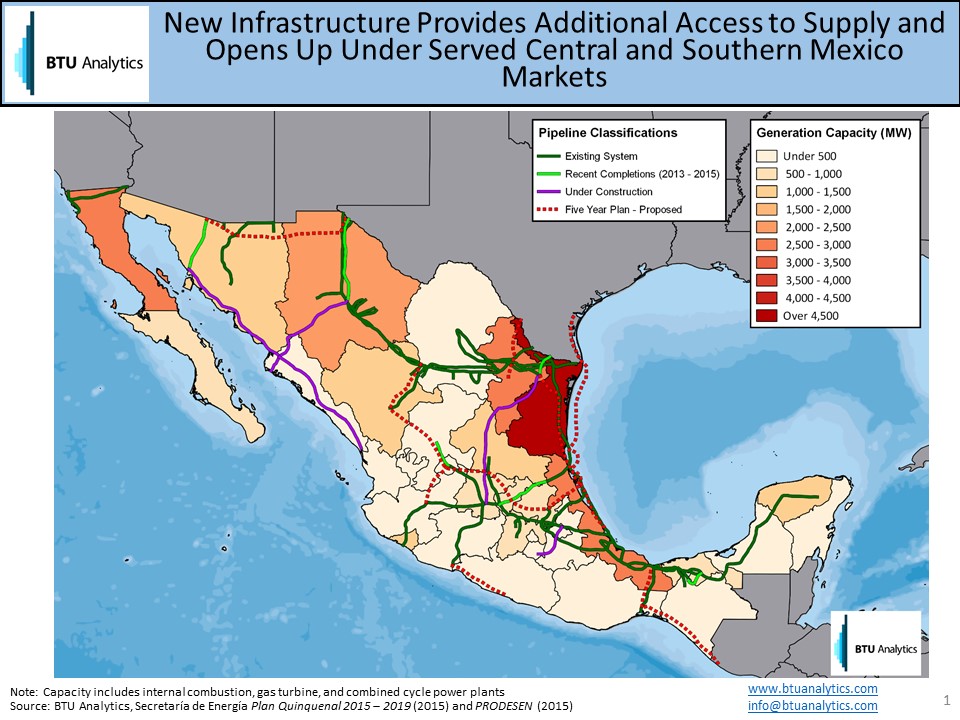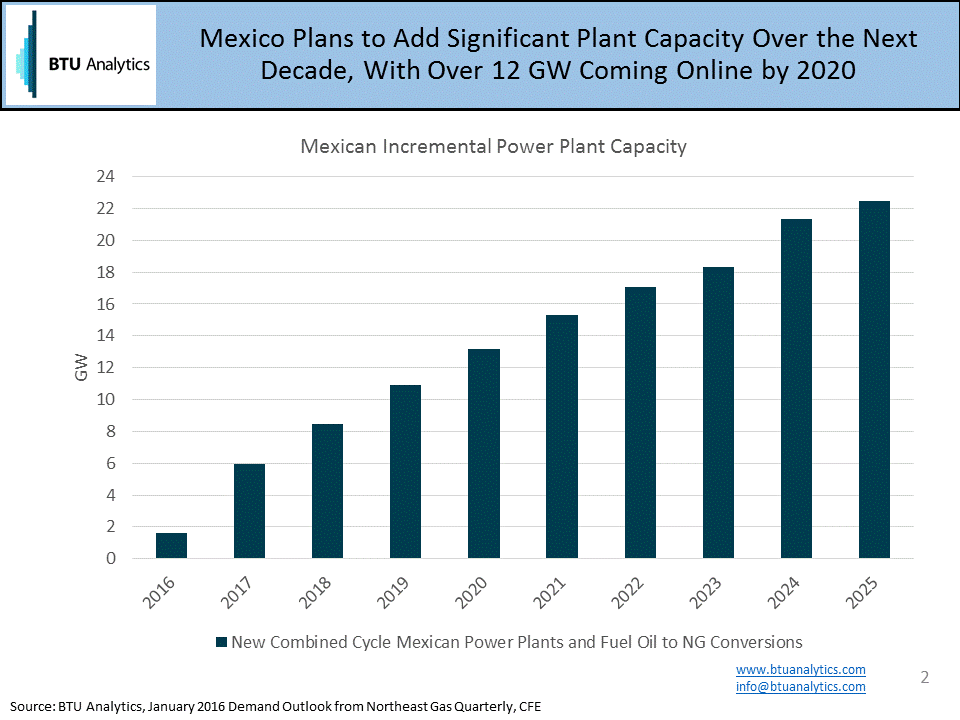On the demand side of the natural gas markets, US exports historically played a minor role compared to demand from the US power, industrial, and res/com sectors. However, since 2010 there has been a substantial increase in gas volumes delivered to Mexico. The Federal Electricity Commission (CFE) is a state-owned company responsible for the development and operation of a major portion of Mexico’s electric industry and they have realized the potential for natural gas to play a vital and affordable part of the country’s energy future. In the last few years the CFE has sanctioned many new combined cycle projects, plant conversions, and natural gas pipelines to facilitate the move towards natural gas. The year 2015 saw the largest jump yet in US exports to the south, fueled by low Henry Hub prices, recently added pipeline and industrial infrastructure, and the displacement of LNG imports in Mexico. While the overall volumes are still relatively small (roughly 3.5% of total US demand), they provide much needed relief for the current oversupplied gas market and are expected to continue growing. Texas gas producers specifically have benefited from the additional pipeline access across the border and increasing Mexican demand as gas produced in the Northeast continues to push into more and more US demand markets. But can this export demand growth continue at its current pace?

The map above shows the recent and proposed pipeline development in Mexico. The new infrastructure increases the overall access throughout the country and across the border. This opens up possibilities for natural gas exports from the US with over 6 Bcf/d of planned pipeline capacity increases through 2020 bringing the total pipeline capacity crossing the border to over 12.5 Bcf/d. Considering that daily export volumes to Mexico in 2015 averaged 2.9 Bcf/d, there will be plenty of pipeline available to meet the growing Mexican market. However, it is important to remember that Mexico has limited natural gas storage, so the pipelines must be overbuilt to accommodate potential peak summer demand. Still, there is enough current and planned pipeline capacity to accommodate significant growth.
Historically, the pipelines and generation sectors have been consolidated to the east coast of Mexico leaving much of the western side of the country underdeveloped and isolated. Much of the new pipeline infrastructure is positioned to address this issue and add capacity for potential industrial sector growth to the south and west. But Mexican industrial and res/com sectors will take time to develop, so near term growth in demand will need to come from a different source.

The main growth in Mexico’s appetite for natural gas is expected to come from the power sector. The CFE is reporting 1,600 MW of fuel oil to natural gas plant conversions for 2016. In addition, over 12 GW of new build combined cycle power plants are anticipated by 2020. Mexico is shifting their dependence on fuel oil and imported LNG towards natural gas, but since their domestic gas production is in decline, US gas will be a big part of their energy future. By 2020, power generation could account for almost 2.0 Bcf/d of additional Mexican demand. However, since plants do not typically run at a 100% of capacity year round, a 75% utilization factor indicating a value closer to 1.5 Bcf/d is more likely. This represents a large piece of the expected total US demand growth in the next 5 years, highlighting the importance of thoroughly understanding the Mexican export portion of the overall US supply and demand balance.

Pipeline flow data across the US-Mexican border highlights the increase in exports between 2015 and 2014. A year over year increase of 45% took US exports to a record average rate of 2.9 Bcf/d in 2015. Although this was mainly driven by LNG displacement, continued growth is still expected going forward, albeit at a more reasonable pace. The BTU forecast predicts gas flows to Mexico for 2016 to be another 8.5% higher than 2015, averaging 3.1 Bcf/d for the year. With pipelines, plants, and infrastructure being so aggressively developed, it isn’t hard to see Mexican exports playing a vital role in US demand. For more information on BTU Analytics’ supply / demand and pricing forecasts, be sure to join us for our FREE WEBINAR on April 21, 2016.









